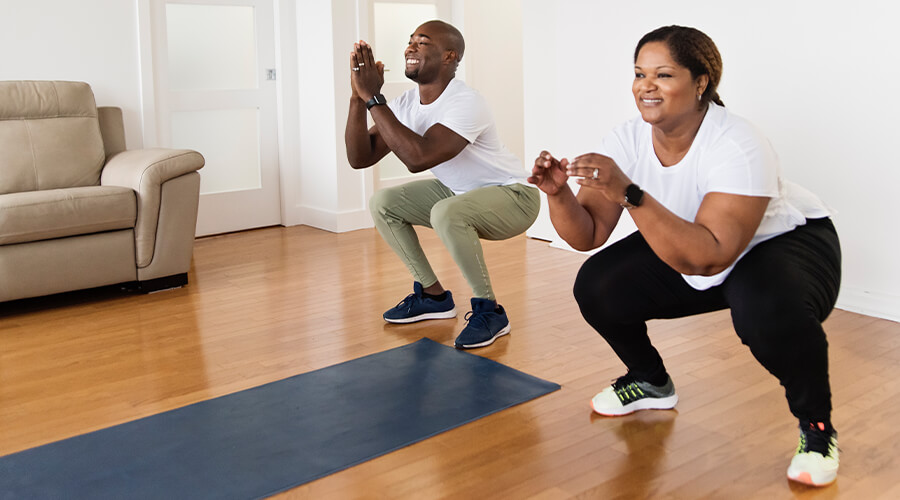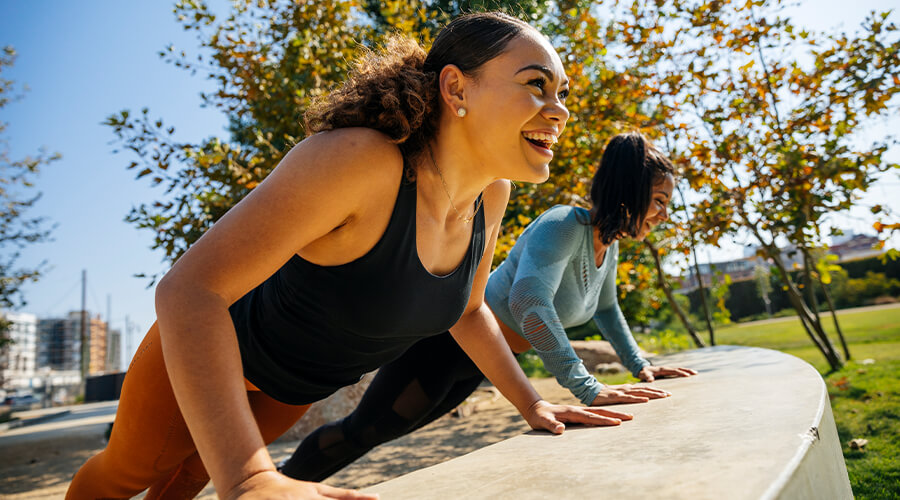Whether you’re a fitness newbie or looking to get back on track, starting an exercise routine can be a challenge. With a few practical strategies, overcoming exercise barriers including busy schedules, lack of motivation or fear of injury is possible. Learn how to navigate the challenges of maintaining a regular exercise routine and unlock your full fitness potential.
“Time and finances are some of the most common reasons that people feel they are unable to get regular physical activity,” says Erin Fausett, exercise physiologist at OhioHealth. “Making your health and fitness a priority can boost your energy levels and improve your mental health. Fostering an interest in physical activity can help you kickstart your fitness journey.”

Set aside the time
When it comes to finding the time to fit in some exercise, Fausett says it’s a myth that you need to spend 30 to 60 minutes at a gym to get a good workout. She explains that exercising in 10-minute intervals can provide the same benefits without any expensive gym equipment.
“You really don’t need to pay for a pricey gym membership or spend hours each day working out to stay healthy,” says Fausett. “Functional fitness, which means using your body the way it is designed to move, can be incorporated into your daily activities pretty easily once you get started.”
Taking a quick walk with a co-worker can provide a brain break and help you get your steps in during the workday. Ways to sneak in extra movement at home include doing sit-to-stands or picking up a pillow and forcefully throwing it to the ground several times during commercial breaks. Fausett says you can also try lifting water bottles or doing bodyweight exercises, such as push-ups and squats, to build up your strength.

Boost your mood
Regular physical activity is linked to positive mental health and emotional balance. Some studies have shown that people who exercise regularly have lower rates of depression and anxiety. The mood boost is largely due to the feel-good endorphins released during exercise. Additional benefits come from the distraction that exercise provides. However, Fausett stresses that you should never quit taking any medication your doctor has prescribed for depression or anxiety without talking to your provider first.
“Once you get moving and find a routine that works for you, it’s amazing how quickly you can feel mentally stronger as a result of exercise,” says Fausett. “I’ve never talked to someone who regretted working out. Most of the time you’ll find you feel much better after getting some physical activity.”
Chronic pain and injuries keep many people from reaching their fitness goals, and health issues such as joint pain can contribute to poor mental health. Fausett says that low-intensity movements can help loosen up stiff joints and ease some types of pain. However, it’s important to stop if you feel pain, pinching or pulling while exercising.
“Your body is smart and will let you know if you are doing too much too quickly,” says Fausett. “Depending on the type of chronic pain you have, even walking to the back door a few times or out to your mailbox can help you get to where you want to be in terms of movement and activity.”

Set goals
We all have different goals when it comes to physical fitness. For one person, it’s to keep playing a favorite sport, such as golf or tennis, with friends and family. Someone else might want to pick up their grandchild or move from the floor to a standing position with ease. Whatever your motivation might be, Fausett recommends focusing on health and wellness benefits instead of how you look.
Setting realistic goals that work for your fitness level and health is an important step on any fitness journey. Fausett says fatigue and burnout are common when people expect too much from their body or fitness routine.
“You should have grace for yourself and enjoy the process. Try not to use someone else’s goal to measure your progress,” Fausett says. “How you schedule physical activity matters. Maybe working out three times a week is too much to start with, but six times a month feels more realistic. It’s important to set yourself up for success.”
Choose activities you enjoy to incorporate into your exercise routine. Activities such as listening to a favorite podcast while walking can be a good way to develop a positive association with your fitness program and keep you moving. Fausett says that you can also try a wide variety of online fitness programs for free before committing to an ongoing payment plan.
“Some people enjoy planning their workouts and activities, while others prefer to have it planned out for them,” says Fausett. “Either approach is effective, and the benefits of physical activity will be obvious before you know it. Try to celebrate the small wins and keep going.”






